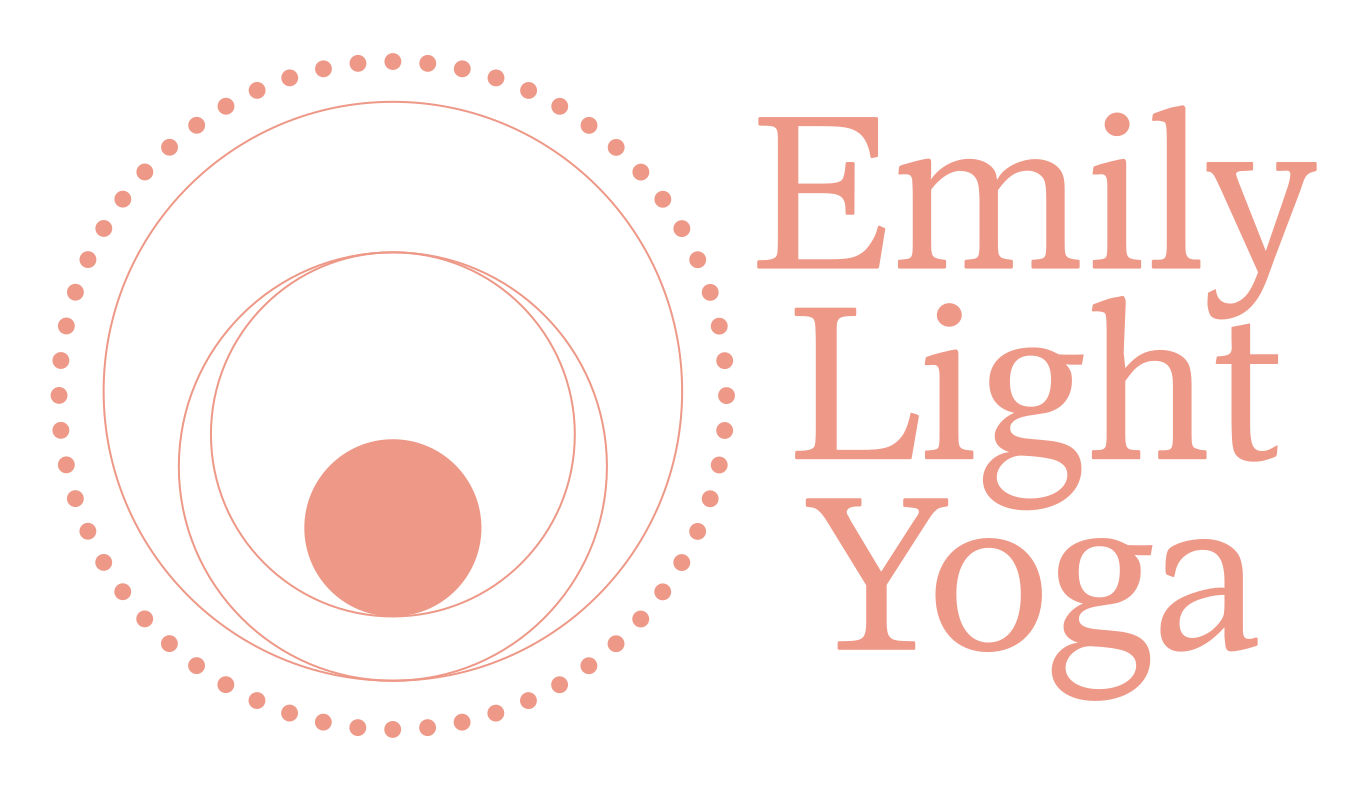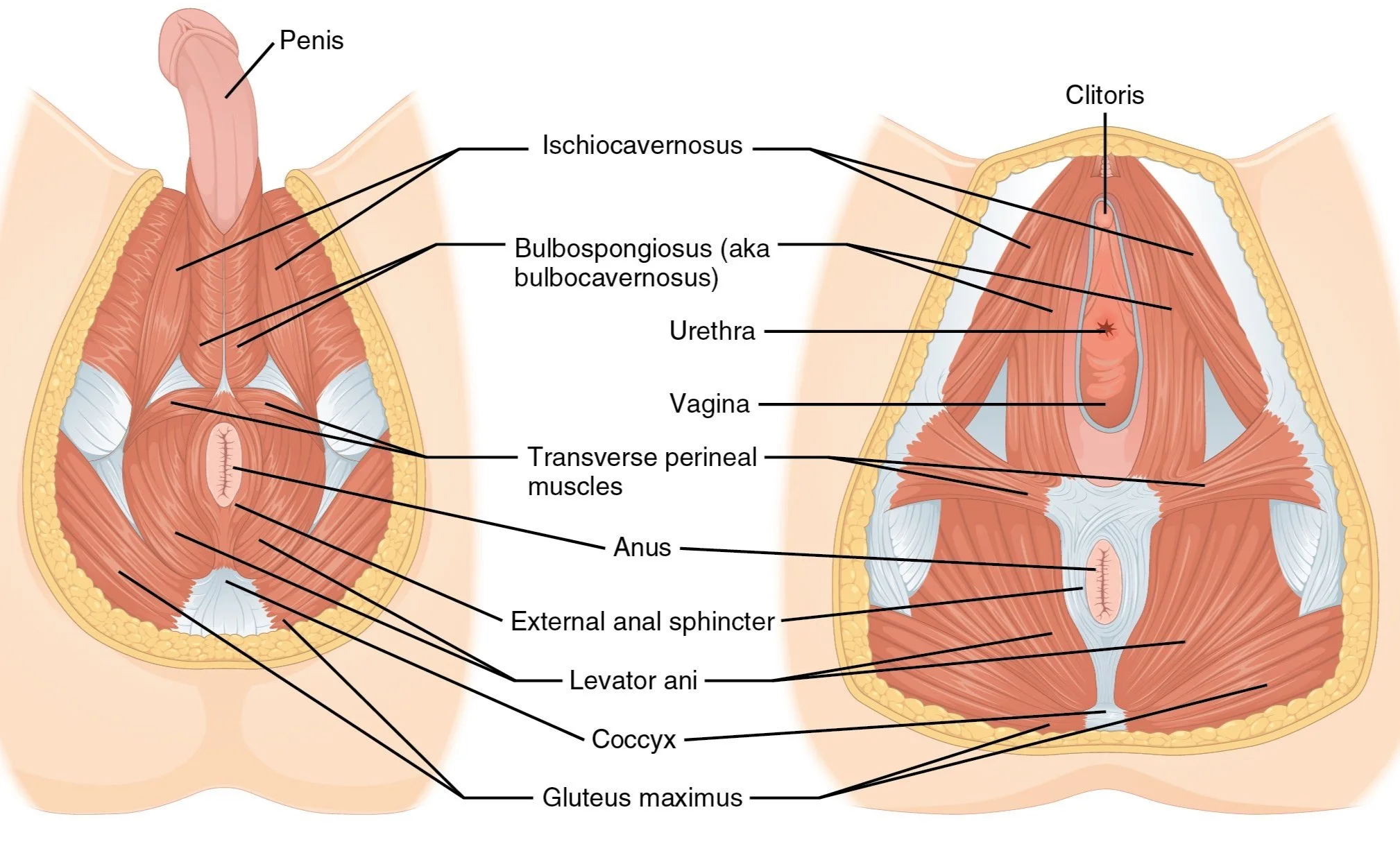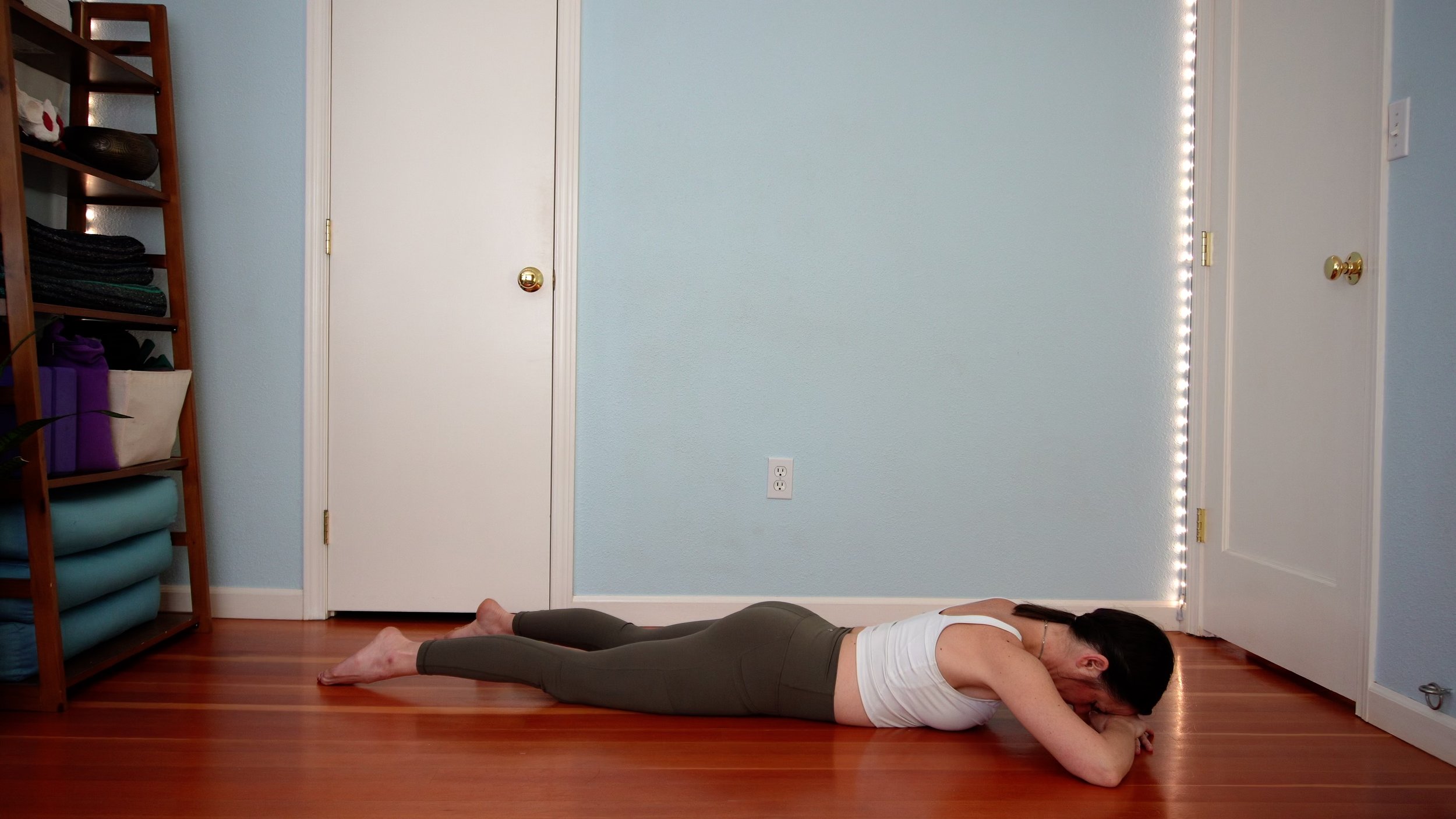Pelvic Floor Breathing Exercises
How many years have you been practicing diaphragmatic breathing? You’ve probably heard cues in class from yoga teachers, other movement professionals, and maybe even from your therapist to “breathe into your belly”, or “allow your abdomen to expand as you inhale”.
When I first started learning yoga, I was taught that diaphragmatic breathing was synonymous with belly breathing. I learned that belly breathing was good and chest breathing was bad. Then I studied yoga therapy in southern India, and I learned that expanding the ribcage and chest can be useful to energize the nervous system in times of lethargy and depression. Years later I took a workshop taught by Leslie Howard and discovered Pelvic Breathing - the missing piece that helped me put it all together.
Beyond Belly Breath
Take a deep breath and notice what happens in the base of your pelvis. Do you feel any movement? While it’s natural and healthy for the pelvic floor muscles to move during respiration, many bodies, independent of gender, have developed patterns of holding and tension that inhibit this natural movement. If your diaphragmatic breath education ends at the abdomen, it’s time to move beyond belly breath.
First, let’s take a step back and review what the pelvic floor’s all about.
The pelvic floor muscles are the muscly bottom of the boney pelvic bowl. This layered group of muscles is responsible for many things, from stabilizing the pelvis and spine to sexual function and orgasm, they are also part of our respiration physiology.
The inner-most layer of the pelvic floor, the pelvic diaphragm, mirrors the respiratory diaphragm in shape, both are positioned as domes aiming up toward the skull. Optimally, these two diaphragms move in tandem as we breathe.
Diaphragmatic Breathing and the Pelvic Floor
During inhalation the respiratory diaphragm, which sits at the bottom of the inside of the ribcage, widens and moves down, expanding the ribcage three-dimensionally. The dome of the diaphragm flattens to create space for the lungs to inflate. During exhalation the respiratory diaphragm hugs inward and moves upward, returning to its domed position to expel air from the lungs. This process is called Diaphragmatic Breathing.
When the body and its tissues are moving freely, the pelvic floor muscles respond to the downward movement of the diaphragm by lengthening. This may feel like the muscles at the base of the pelvis descend down, deepening the pelvic bowl with the inhalation. With exhalation and the ascent of the diaphragm, the pelvic floor muscles follow suit, shortening and doming toward the abdomen. The movement of the pelvic floor muscles with respiration is called Pelvic Breathing.
With Pelvic Breathing, there’s no intentional effort in the muscles of the pelvic floor. This means there’s no bearing down with the inhalation, nor is there an intentional pelvic floor contraction with the exhalation.
Let’s go back to when you took a deep breath to notice the movement of your pelvic floor muscles. If you took a deep “belly breath” and didn’t notice any movement at the base of your pelvis, try again with the following practices:
Pelvic Floor Breathing Exercises
Ribcage and Pelvic Breathing Tutorial - 8 min
Ribcage and Pelvic Breathing Instructions and Photos
Constructive Rest
Lie down with feet on the floor and knees bent toward the ceiling.
Imagine a balloon in your ribcage and another in your pelvis.
Inhale visualizing your ribcage balloon and then your pelvic balloon inflate. Guide your breath to expand and deepen your pelvic bowl, so the base of your pelvis feels like it’s moving toward your feet.
Exhale completely so you feel your abdomen hug inward imagining your pelvic and ribcage balloons deflate as your pelvic floor muscles shorten, lift and dome toward your belly.
Practice Ribcage and Pelvic Balloon Breathing for one minute or more in this position. Once you have the feel of it, practice this throughout your day and in all positions. Soon normal breathing will include the natural movement of your pelvic floor muscles.
Crocodile Pose
In this posture you’re lying on your front side and the floor, bed or couch inhibits the expansion of your belly redirecting the movement of breathing down into the pelvis to facilitate Pelvic Breathing
Lie on your abdomen.
Stack your hands and rest your forehead on them. You can also rest your forehead on a pillow or a block, with a rolled blanket under your upper chest, or in any comfortable position.
Breathe deeply and notice any movement in your pelvis or at the base of your pelvis. Does anything feel different compared to Ribcage and Pelvic Balloon Breathing or your first test breath?
Getting the hang of Pelvic Breathing can take some time but it is worth it – here’s why:
Jessica Corman, a Doctor of Physical Therapy living in Portland OR, has been specializing in pelvic floor health for over 10 years. She describes the importance of Pelvic Breathing as, ‘…[a] coordinated breathing using both the respiratory diaphragm and the pelvic diaphragm in synchronous motion. This is important because this simple movement is ideally used many times per minute – as often as you breathe! However, if it is not being used, then this is many opportunities for lengthening and shortening being skipped – the same, in some ways, as not using a muscle group at all. And not using a muscle group often reduces its flexibility, strength, and coordination eventually resulting in dysfunction of one kind or another.”
Pelvic Breathing – Exercise in Every Breath
Pelvic breathing is the body’s natural way of keeping those pelvic muscles healthy, mobile and strong. Whether you’re dealing with anxiety, low back pain, urinary leakage, or you want to improve core strength and balance, it’s time to move beyond belly breath.






